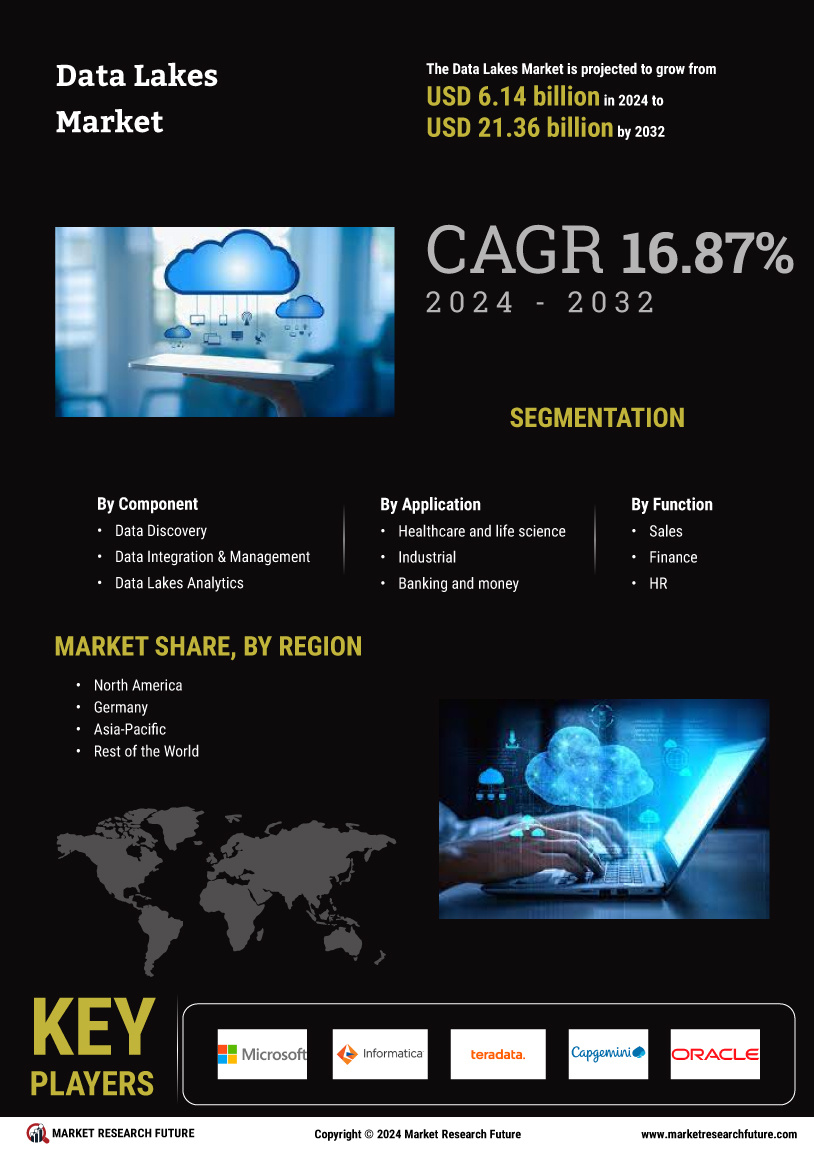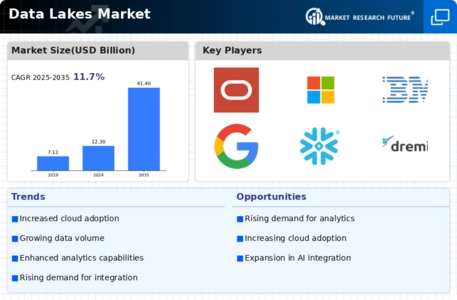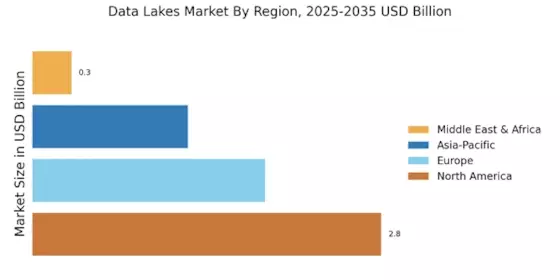The Data Lakes Market is currently characterized by a dynamic competitive landscape, driven by the increasing demand for big data analytics and the need for organizations to harness vast amounts of unstructured data. Major players such as Amazon Web Services (US), Microsoft (US), and Snowflake (US) are at the forefront, each adopting distinct strategies to solidify their market positions. Amazon Web Services (US) continues to innovate its cloud offerings, focusing on enhancing data accessibility and integration capabilities. Meanwhile, Microsoft (US) emphasizes its Azure platform, integrating advanced analytics tools to facilitate seamless data management. Snowflake (US) is carving out a niche by promoting its unique architecture that allows for efficient data sharing and collaboration across enterprises. Collectively, these strategies not only enhance their competitive edge but also contribute to a rapidly evolving market landscape.
In terms of business tactics, companies are increasingly localizing their operations and optimizing supply chains to better serve regional markets. The Data Lakes Market appears to be moderately fragmented, with a mix of established players and emerging startups vying for market share. The collective influence of key players is significant, as they leverage their technological advancements and customer relationships to shape market dynamics. This competitive structure fosters an environment where innovation is paramount, compelling companies to continuously adapt and refine their offerings.
In August 2025, Amazon Web Services (US) announced the launch of its new data lake formation tool, designed to simplify the process of building and managing data lakes. This strategic move is likely to enhance user experience by reducing the complexity associated with data ingestion and management, thereby attracting a broader customer base. The introduction of this tool underscores AWS's commitment to maintaining its leadership position through continuous innovation and customer-centric solutions.
In September 2025, Microsoft (US) unveiled a partnership with a leading AI firm to integrate machine learning capabilities into its Azure Data Lake service. This collaboration is poised to enhance the analytical capabilities of Azure, allowing users to derive deeper insights from their data. By aligning with AI technologies, Microsoft not only strengthens its product offering but also positions itself as a forward-thinking leader in the data analytics space, catering to the growing demand for intelligent data solutions.
In July 2025, Snowflake (US) expanded its global footprint by entering into a strategic alliance with a prominent telecommunications provider in Europe. This partnership aims to enhance data accessibility for enterprises in the region, facilitating real-time analytics and decision-making. Such strategic alliances are indicative of Snowflake's approach to leveraging partnerships to drive growth and expand its market presence, particularly in regions with burgeoning data needs.
As of October 2025, the Data Lakes Market is witnessing trends that emphasize digitalization, sustainability, and the integration of artificial intelligence. The current competitive landscape is increasingly shaped by strategic alliances, which enable companies to pool resources and expertise, thereby enhancing their service offerings. Looking ahead, it is anticipated that competitive differentiation will evolve, shifting from traditional price-based competition to a focus on innovation, technological advancements, and supply chain reliability. This transition suggests that companies that prioritize these elements will likely emerge as leaders in the Data Lakes Market.


















Leave a Comment